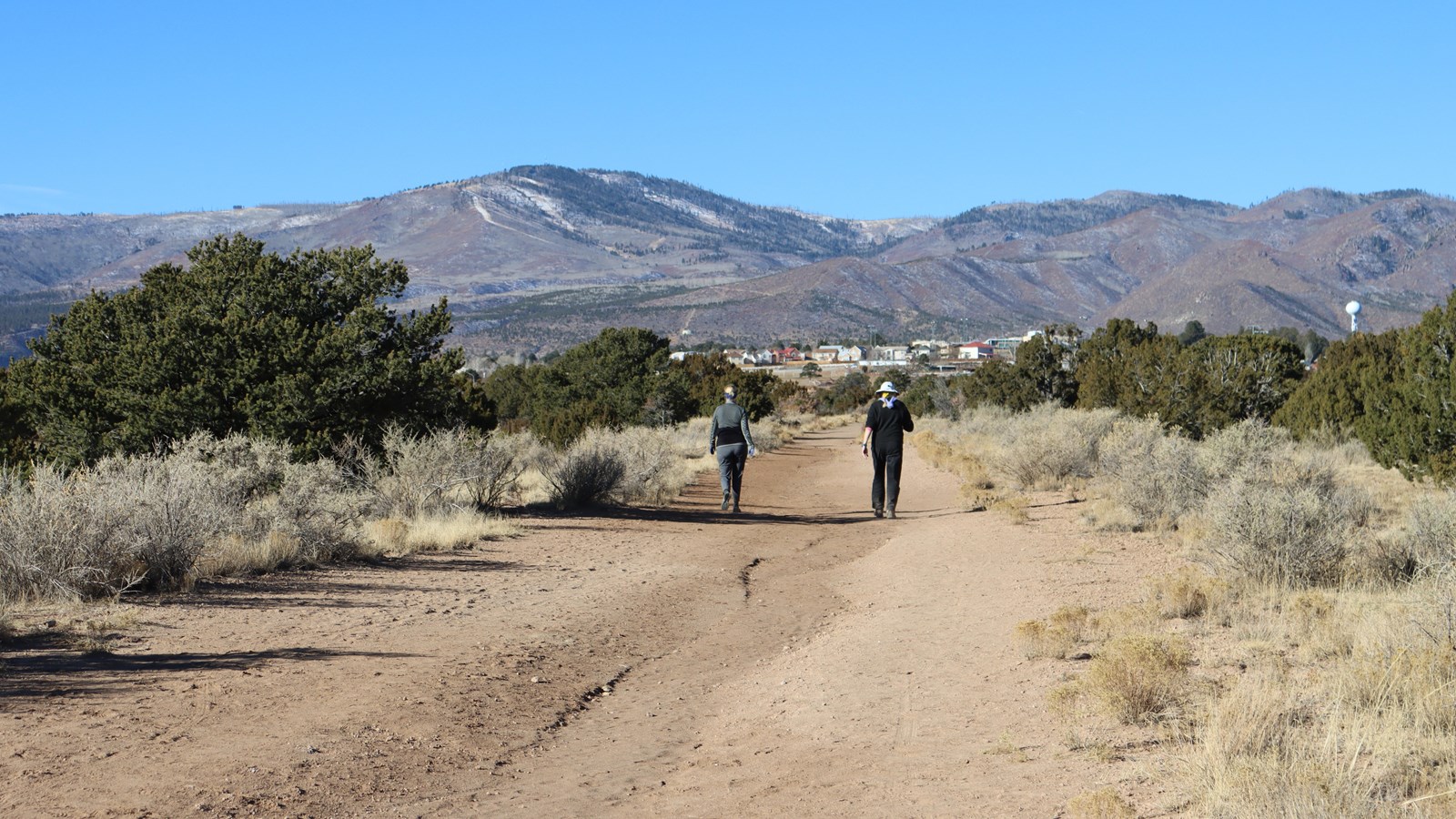Last updated: April 15, 2022
Place
Kwage Mesa Trailhead

NPS
Walking out on the Kwage Mesa, you can see evidence of the human history in this area and gain a better understanding why Dr. J. Robert Oppenheimer and Gen. Leslie Groves selected this location for their top-secret laboratory.
Kwage (KWA-hee) Mesa stretches out on the north side of Los Alamos. This area, also known as the Pajarito Plateau, has supported human life for more than 10,000 years. About 900 years ago, Ancestral Pueblo people moved to the Plateau and established permanent settlements. Later, early Spanish settlers homesteaded the plateau. In 1917 Detroit businessman Ashely Pond founded the Los Alamos Ranch School, which occupied this area until the Manhattan Project appropriated the land for Project Y in 1942. Gen. Leslie Groves chose the site in part because the mesa tops and canyons provided the remote, inaccessible landscape the Manhattan Project required.
More than one million years ago, a series of volcanic explosions left behind layers of pink, tan, and orange tuff, a soft rock deposit. Runoff from nearby mountains carved canyons into the Pajarito Plateau, leaving behind long, thin mesas. Water and wind eroded the exposed canyon walls over time, creating holes in the canyon faces. The Ancestral Pueblo people used hand tools to enlarge and shape these holes into shelters called cavates, and used blocks of volcanic tuff to build structures along the cliff faces. From the trail, you can see both natural and human-made features on the cliffs.
Continue Your Journey
Continue your outdoor adventure by stopping by Ashley Pond, a centerpiece of the Los Alamos community. Take a stroll down Bathtub Row to see the historical houses of the Manhattan Project. Take a photo with Groves and Oppenheimer Statues located in downtown Los Alamos. Learn about local homesteaders at the Romero Cabin and ancestral Pueblo people at the nearby Ancestral Pueblo Site.
